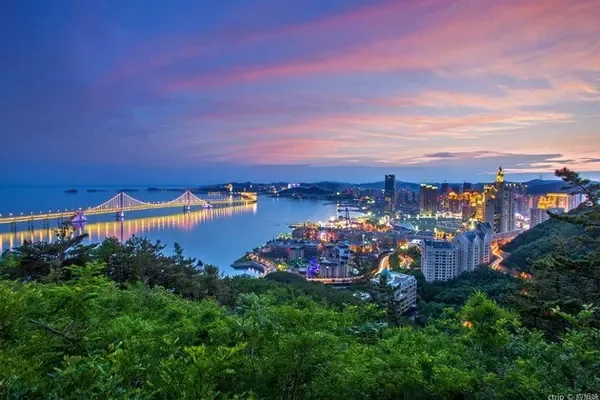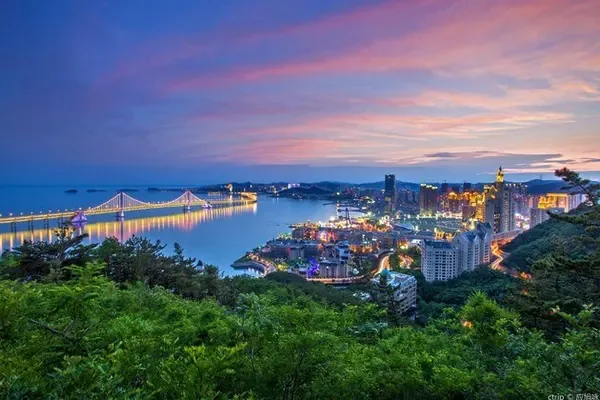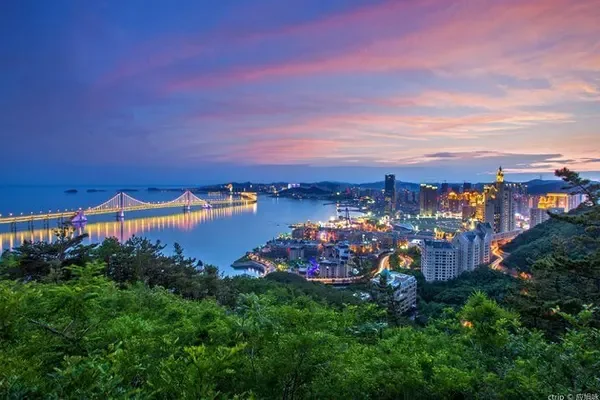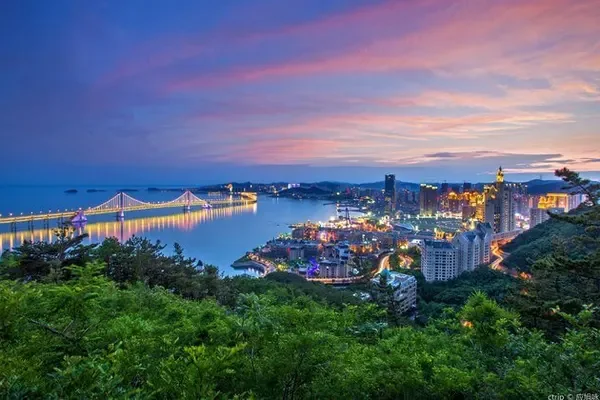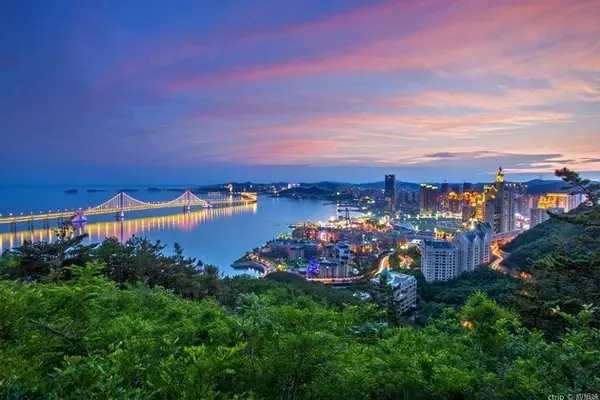















Ngari, Tibet is located in the southwestern border of China, in the west of the Tibet Autonomous Region, where the ancient Zhang Zhung Kingdom was located in the first century. Ngari is the place where the Himalayas and Gangdise Mountains gather, and it is called "the ancestor of ten thousand mountains". At the same time, it is also the birthplace of the Yarlung Zangbo River, the Indus River and the Ganges River, so it is also called "the source of all rivers". There is a saying that describes Ali very precisely—without Ali, there is no Tibet. Ngari has a vast territory, accounting for a quarter of the entire Tibet, and the average altitude is above 4,500 meters, known as the "roof of the roof of the world". Ali has a vast sky, vast and profound scenery of the polar plateau. Here there are numerous mountains, snow-capped peaks, snow-capped mountains, grasslands, lakes, valleys, soil forests, glaciers, moraines, canyons, volcanoes, etc., as long as you want to see landforms in Tibet, there are all here.








The Ngari area is famous for its vastness, barrenness, and vastness. The heart-shattering pictures are what many Tibetan fans can't stop facing such difficult conditions. Traveling to Ali is simply divided into the south line and the north line. The south line is a relatively mature line, and the conditions are much better than the north line. Of course, the northern route is more difficult, and it also involves entering no-man's land, but it still attracts many Tibetan fans. Although this is the third time I have entered Tibet, it is the first time I have stepped into the land of Ngari. To be on the safe side, of course I chose to travel on the southern route. On the morning of September 25th, I went to the Lhasa border station to get the border permit. I drove along the Lhasa River all the way to Shigatse, where I will settle down tonight. The journey is 360 kilometers, all the way west. It is located at the pass of "Gangbala Mountain" in Shannan area, with an altitude of 4990 meters and 108 kilometers away from Lhasa. Standing on the mountain pass, at the foot of one of the three holy lakes in Tibet, "Yamdrok Yongcuo", referred to as Yanghu Lake, is magnificent and beautiful. The viewing platform here can overlook the panorama of Yanghu Lake, and it is the best place for many tourists to take pictures. The car drove down another 5 kilometers, and the curved road was surrounded by cliffs on one side and mountains on the other. After going down the mountain, you can get close to the highest freshwater lake in the world. Yamdrok Yongcuo is like a mirror with blue waves and lush water and grass. It means "clear water lake" in Tibetan. It is a rich plateau pasture. Yanghu Lake is a natural scenic spot integrating plateau lakes, snow mountains, pastures, hot springs, wild animals and other landscapes.

The water in Yanghu Lake forms a three-color lake under the refraction of sunlight. There are even more than these three colors. It is really impossible to describe them in exact words, so we can only express our opinions.







Ali South Line has formed a very mature line, and there are many scenic spots along the way. From Yanghu Lake is the "Kanola Glacier". This is the closest glacier to the road in Tibet. It is only 300 meters away. The front of the ice tongue is 5,560 meters above sea level. There is a wooden plank road next to the road to climb to the top for a closer look. glacier. In 1996, in order to shoot a series of avalanche scenes in the movie "Red River Valley", the Chinese director did an extremely stupid and unbelievable thing. He even used explosives to blow up a big gap in the Canola Glacier. There is still a scar that will never heal. This unreasonable act of destroying the precious heritage of human nature will be condemned and cast aside by everyone.






When you arrive at the Kanola Glacier, you have already entered the Shigatse area, and then go forward to Gyantse County. Here stands a long-established "Gyantse Castle" in the county seat, which is famous for the epic story of Tibetans resisting the British invasion in 1904. The movie "Red River Valley" describes this storyline. After arriving in Gyantse County, it is not far to go to Shigatse. I will stay in Shigatse City at night, and I will probably start entering the Ngari area tomorrow. The first day's itinerary was all over when we arrived in Shigatse, and the car stopped and stopped for 360 kilometers. , taking the 307 provincial road in good condition.








It was nine o'clock in the evening when I arrived at Shigatse Hotel last night. I fell asleep at eleven o'clock and woke up naturally at six o'clock in the morning. This was the best night of sleep in the past ten days since I entered Tibet. We set off again at 9 o'clock in the morning, and stopped at the 5,000-kilometer memorial wall marked with the 318 National Highway in Gyantse County for the first stop. This is Qianggong Village, Resa Township, Gyantse County. It stretches from People’s Square in Shanghai all the way to Tibet, the most beautiful road in China—G318, also known as the “Shanghai-Nie Line”. It is the longest national highway in China, with a total length of 5,476 kilometers. , it is exactly 5,000 kilometers to here. A group of motorcyclists from Spain were sitting on the steps of the memorial wall, and they happily took a group photo in front of the memorial wall. Presumably they may have driven here from the starting point of Shanghai People's Square, so it is very interesting that they are so happy. Gyantse County used to be Angren County, which still belongs to the Shigatse area. "Sangsang Prairie" is a famous scenic spot in Angren County, located in Sangsang Town. "Sangsang" in Tibetan means a place with good water quality and good grass quality, so the ghee produced here has a pure taste and is famous far and wide. At an altitude of 4567 meters, it is a veritable plateau pasture. The pasture has a very long red-colored wooden plank road, which leads directly to the nearby Sangsang Town. This is to prevent tourists from stepping on the grassland. High mountains and blue sky, white clouds, endless grasslands, herds of cattle and sheep, idyllic pastoral, poetic and picturesque.







Going down after Angren County is Saga County. I thought it would enter the Ngari area today, but Saga County still belongs to the Shigatse area. After crossing the 4915 Michela Pass, the scenery along the way began to change. The car arrived at Jiajia Town, Saga County, and ran a total of 450 kilometers today, but it should be evening when it was still dark in Jiajia Town. The average altitude of Jiajia Town is over 4,600 meters. It belongs to the alpine region. It is a transit point for entering Ngari area. Many people will take a rest here before setting off for Ngari. I got up early this morning and went out to have breakfast. There was a thick layer of snow on the streets of Saga County, and there was goose feather snow in the sky, and the temperature dropped suddenly. The car drove out of Saga County, all the way over mountains and ridges, the roads were basically covered with ice and snow, and there was a vast expanse of white northern scenery.









The beautiful scenery along the way from Saga County to Zhongba County is endless. Zhongba County may be the last county bordering Ali, which means that it is about to enter the Ali area. Payang Town is the seat of the government of Zhongba County, a small town with a very western flavor. There is a large pasture outside the town, where cattle and sheep roam freely between the green grasslands and snow-capped mountains. The mutton soup pot in Payang Town is very famous because the mutton here is tender and delicious. The grassland wetland in Payang stretches for hundreds of kilometers, the mountains on both sides of the national road are continuous, and the flat grassland stretches as far as the eye can see, following the sky road to the sky. At 3 o'clock in the afternoon, I finally came to the secret place in western Tibet, Ali in the sky.











After the car entered Ngari, it soon came to the first famous scenic spot, the holy lake "Manasaka Yumco". Mapang Yumco, located in Alipuran County, means "invincible lake" in Tibetan, and the surrounding natural scenery is very beautiful for hundreds of miles. She is the birthplace of the four major rivers in Asia, and has been the "world center" holy place for Buddhists and Bon believers since ancient times. Mapang Yumco, one of the three holy lakes in Tibet, is the most transparent freshwater lake in China. The lake is pear-shaped and the maximum water depth is 82 meters. The vast, clear and tranquil lake, every summer and autumn Buddhists come here with their young and old to "pilgrimage" and bathe in the holy water in the lake to prolong their lives.





Natural landscapes are sometimes so weird and weird. Just beside the transparent, quiet and holy Manasarovar Lake, there is a completely opposite saltwater lake---Ghost Lake, which is called "Laangcuo" in Tibetan, meaning "poisonous". of the Black Lake".




Ali's famous sacred mountain "Kang Rinpoche" is located 20 kilometers southeast of Manasarovar, the holy lake. It is the main peak of the Gangdise Mountains, with an altitude of 6656 meters. Gang Rinpoche means "mountain of gods" in Tibetan, and is recognized as the center of the world by the four major religions: Hinduism, Tibetan Buddhism, Yongzhongben religion, and ancient Jainism. The peak is covered with ice and snow all the year round, and the four walls of the peak are symmetrical, forming a pyramid with a round crown, which is really spectacular. The sky above the peak is often shrouded in white clouds, making it more mysterious. When I arrived, I was fortunate to encounter such a shocking landscape. I took a picture of the majestic, majestic, quiet and solemn mountain from a distance, which has a great visual impact.





The dusk scenery of the holy mountain and the holy lake is so vast and deep, and the mysterious colors on the edge of the sky make people daydream infinitely and are breathtaking.




I entered the Ngari area yesterday, and the total trip in one day was 589 kilometers, which shows the size and breadth of Ngari. Tonight, I will stay in Taerqin, Baga Township, Pulan County, at an altitude of 4,700 meters. The town is not small, and it is often overcrowded. Because it is located at the foot of Mount Kailash and the north of the holy lake Manasarovar, it is the starting point and end point for believers from all over the world to go around the mountain and around the lake. Especially in summer and early autumn, believers from India will arrive in the town by car, and it is really hard to find a bed at that time. Tarqin is known as the gateway to the holy mountain, as long as you enter the town, you can directly face the Kailash holy mountain standing in front of you. Unfortunately, when we arrived, the town was shrouded in dark clouds, with rain and snow floating in the sky, the temperature dropped sharply, and it was freezing and cold. Fortunately, I just took a beautiful picture of Mount Kailash in Manasarovar. I didn't expect to see the face of Mount Kailash again in the next two days. What is meant by an opportunity not to be missed and not to come again, I deeply understand it at this moment. Especially in the high-altitude area of Ngari, the weather is ever-changing, and the beautiful scenery is always gone. Tarqin didn’t get light until eight o’clock in the morning, and the town was cut off from midnight every night until noon the next day. Get up early and get ready in the dark, and go out for breakfast at 7 o'clock. At this time, the whole street was still dark, only a restaurant opened by a Northeast man illuminated a corner of Tarqin with its own power generation. We set off at 8 o'clock sharp. Today's journey is nearly 600 kilometers, and we are looking forward to the surprises brought by Ali's scenery.












Early in the morning, the sky in Tarqin was still dark, and the car set off for Zada County in the rain and snow. Surprisingly, Ali's roads are really good, all of which are asphalt roads. After entering Zada County, the sky cleared up, and the blue sky, white clouds and sunshine shone all over the place, sweeping away the depression before departure. Zhada County is located in the Xiangquan River Valley and is a border county. The beautiful mountains of Nepal can be clearly seen on the left side of the car window. The car drove quickly to the hillside outside Zada County. There is a viewing platform overlooking the rows of earth forests under the hillside, which is very spectacular. The soil forest was formed by the influence of ancient mountain movements and was caused by geological changes over millions of years. This majestic soil forest along the valley of the Xiangquan River is the most famous geomorphological scenic spot in Zada County, "Zada Soil Forest", and it is also the most typical and largest soil forest in the world. The Zada soil forest has a variety of shapes, ranging from 3800 meters to 4200 meters above sea level, castles, palaces, buildings, tents, rows of guards, everything you need, let your imagination infinitely magnify.









Coming down from the soil forest viewing platform, the car went downhill and shuttled through the soil forest with a height of tens of meters. There is no asphalt road here, only a dirt road naturally rolled out by cars. There are various shapes of soil walls on both sides, and the car seems to circle around under the soles of giants. Looking from a distance, the entire Zada County is surrounded by soil forests, like an isolated island in a grand canyon. Continue to go down 18 kilometers from Zada County, and you will find the very famous "Guge Dynasty Ruins". It is located on an earthen hill beside the Xiangquan River, covering an area of about 180,000 square meters, with a drop of more than 300 meters from the bottom of the mountain to the top of the mountain. There are more than 600 houses, pagodas and caves, forming a huge ancient building complex.














The Guge Dynasty was established in the first half of the 10th century AD, with 16 hereditary kings successively. The palace castle has been continuously expanded from the 10th to the 16th century, and reached its heyday. The more than 600 ancient buildings can be regarded as shocking attractions. The mysterious Guge Dynasty disappeared secretly in history overnight 300 years ago, and it is still an unrevealed mystery.



The Guge Dynasty is above 4,200 meters above sea level. I took the shuttle bus from the bottom of the mountain to the entrance on the hillside and started to climb up. Along the paved stone steps, there is also a secret passage in the mountainside. The secret passage is very narrow and can only be passed by one person, and then you can climb to the top. Climbing to the top of the dirt hill, I was exhausted and out of breath. Ascending the heights and looking far away, the earth forests in the distance are magnificent. And the ruins under my feet, it seems that I am standing on the shoulders of giants, traveling through time and space and returning to the glorious years of the Guge era.











In the past few days, I have been running happily on the vast land of Ali. The distance between scenic spots is very far, and the daily driving distance is more than four to five hundred kilometers. If you don't put in the hard work, you will be rewarded with happiness. The scenery along the way in Ali is as pure as a piece of white paper, and the natural painters sprinkle colorful colors on it. The pure ones cannot be purer, and the beautiful ones cannot be more beautiful. Every day in Ali, from the sunrise to the sunset, cars are walking on the road, and people are swimming in the painting. One after another beautiful scenery between heaven and earth, only Ali in the world can have. Ali --- the heart of the polar region, the temple of the gods, the top of the world. Ali is a kind of disease, which cannot be cured if it is not treated, and Ali is a kind of hidden disease, which cannot be cured if it is removed.
